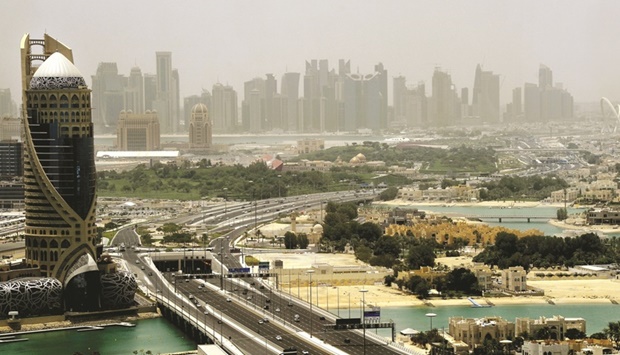Qatar, which is gearing up to host the FIFA World Cup later this year, has already initiated measures to curb the rising inflation such as a food security programme in which the government regulates the prices of essential food items as well as medium fiscal policies that control government spending, according to Kamco Invest.
In its latest regional economic outlook report, the International Monetary Fund (IMF) forecast Qatar’s consumer price index (CPI) inflation to average 3.5% in 2022 and 3.2% in 2023.
The IMF underlined that the combination of increasing global food prices and strengthening domestic demand are the main drivers of Qatar’s inflationary upward trend.
Qatar’s inflation grew 5.4% year-on-year during June-2022, recording the fifth consecutive monthly growth. Moreover, the Qatar’s consumer price index remained flat during June-2022. Qatar’s inflation is mainly driven by its recreation and culture sector, which registered 36.5% year-on-year rise during June-2022 after the country eased pandemic related restrictions according to officials in Qatar’s Finance Ministry.
Moreover, the housing and electricity sector index increased by 5.4% y-o-y during June2022 adding to the upward inflationary pressure.
Kamco Invest said the government policies insulated the Gulf Co-operation Council (GCC) from rising inflation, which has been "significantly" lower than in most of the advanced and emerging markets.
"Inflation in the GCC has been significantly lower than in most of the advanced and emerging market countries. The moderate inflation rate rise in the GCC countries is mainly attributed to improved economic activity in the region as higher oil and gas prices strengthened government coffers and investment," it said.
Moreover, the GCC countries, despite importing up to 90% of their food supplies, have "weathered" the Russia-Ukraine conflict-related food supply chain disruption mainly by having varied food import sources, it said.
(The) government price caps on essential food items and fuel also insulated the GCC households from steep food and fuel price rises, according to the note.
The IMF said the GCC inflation rate to witness a growth of 3.3% in 2022 and 2.3% for 2023.
The IMF expects Kuwait’s inflation to average 4.8% in 2022, the highest in the Gulf region. Comparatively, it projects 2.5% inflation growth for Saudi Arabia in 2022, the lowest among the GCC.
On the other hand, the IMF forecasts 3.7% inflation uptick for UAE and Oman as compared to inflation rate of 3.7% for Qatar and Bahrain, respectively, in 2022.
The overall Arab region countries were not immune from the repercussions of the war and commodity shortages, as the inflation rate in the Arab countries is expected to rise in 2022 to 7.5%, compared to about 5.7% in 2021, followed by a small decline in 2023 to reach 7%, according to Arab Monetary Fund.
Higher oil prices are also expected to help the GCC countries offset the effect that the US interest rate hike might have on their non-oil economic sectors. According to the IMF, higher oil and gas prices in the GCC are expected to improve the domestic liquidity situation and induce expansionary fiscal policies which increase available credit in the private sector.
In response to the latest 75 basis points (bps) hike in the US Fed rate, the GCC central banks followed varied paths in their rate hike decisions. While Saudi Arabia, the UAE, Bahrain and Oman fully replicated the rate hikes in their respective policy rates, Kuwait and Qatar did not fully replicated the rate hikes.
Qatar raised its overnight lending rate by 50 bps to 3.75% and repo rate by 75 bps to 3.25%, Kamco Invest said.

Qatar has initiated measures to curb the rising inflation such as a food security programme in which the government regulates the prices of essential food items as well as medium fiscal policies that control government spending, according to Kamco Invest

